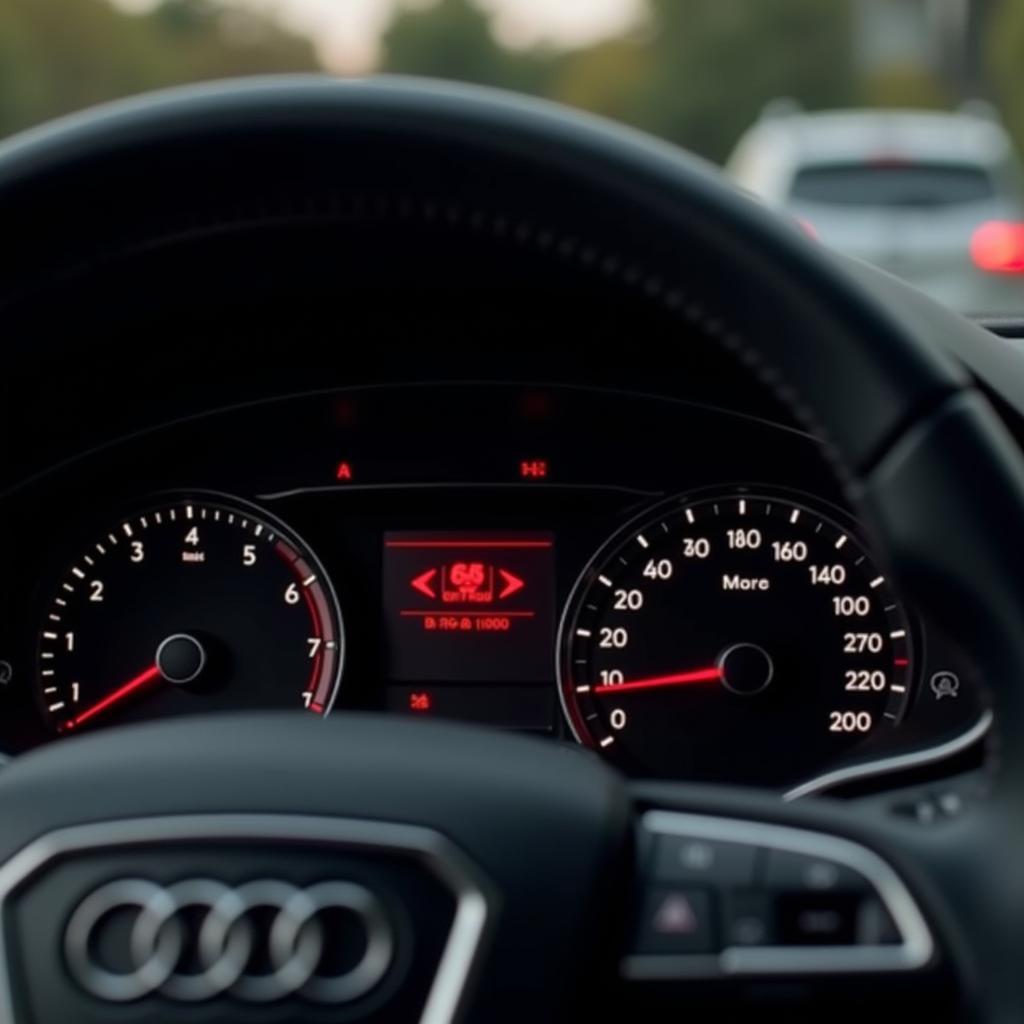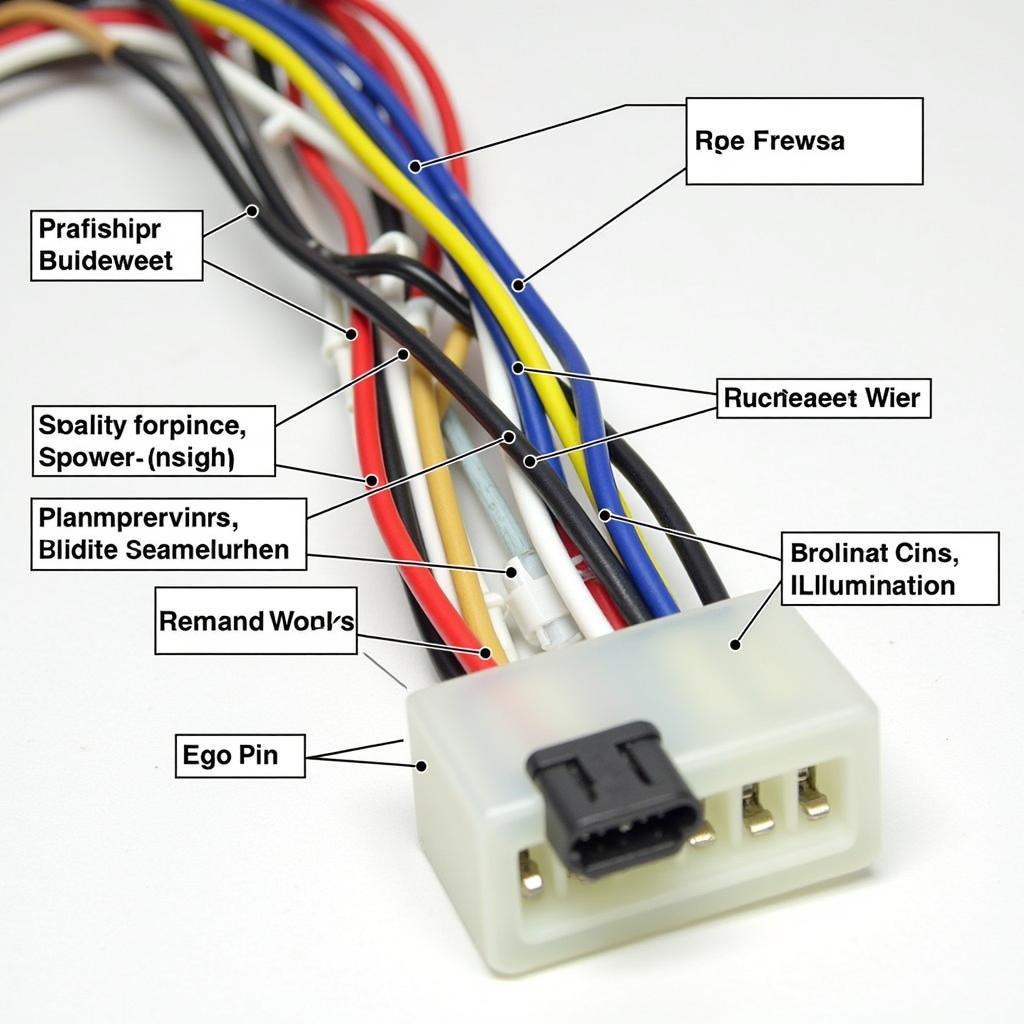Your car’s brake warning light is a crucial indicator of potential issues with your braking system. When it illuminates, it’s vital to understand why and take appropriate action. This light can indicate a variety of problems, from low brake fluid to a faulty brake pad sensor.
Common Causes of a Brake Warning Light
Here are some of the most common reasons why your brake warning light might come on:
1. Low Brake Fluid
The brake warning light often illuminates when the brake fluid level is low. Brake fluid is essential for transmitting pressure from the brake pedal to the calipers, which squeeze the brake pads against the rotors. If the fluid level drops below a certain threshold, the warning light will activate.
“Always check your brake fluid level regularly, as low fluid can be a sign of a leak or wear and tear on your braking system,” says [Tên chuyên gia giả định], a certified automotive technician.
2. Faulty Brake Pad Sensors
Modern cars often have sensors embedded in the brake pads that trigger the warning light when the pads are worn down to a certain thickness. These sensors send a signal to the car’s computer, which then activates the warning light.
3. Brake System Malfunction
The brake warning light can also come on due to other problems with the braking system, such as:
- A leak in the brake lines
- A faulty brake caliper
- A faulty brake booster
- A faulty brake master cylinder
- A problem with the ABS (Anti-lock Braking System)
4. Electrical Issues
Sometimes, the brake warning light can come on due to electrical problems, such as:
- A faulty brake warning light switch
- A loose wire connection
- A faulty fuse
- A problem with the car’s computer system
What to Do When the Brake Warning Light Comes On
If your brake warning light comes on, it’s crucial to take action immediately. Here’s what you should do:
- Pull over to a safe location. Don’t continue driving with the warning light illuminated.
- Check the brake fluid level. If the fluid level is low, you’ll need to add fluid immediately. If you’re unsure how to do this, consult a mechanic.
- Inspect the brake pads. If you’re comfortable with basic car maintenance, you can visually inspect the brake pads to see if they’re worn down.
- Have your car inspected by a mechanic. It’s essential to have your braking system checked by a qualified technician to determine the root cause of the problem.
“Never ignore a brake warning light,” emphasizes [Tên chuyên gia giả định], a renowned automotive expert. “It’s a critical indicator that something is wrong with your brakes.”
Can You Drive With the Brake Warning Light On?
It’s not safe to drive with the brake warning light on. Driving with a faulty braking system can be extremely dangerous and lead to accidents.
How to Prevent Brake Warning Lights
You can help prevent brake warning lights by following these tips:
- Check your brake fluid level regularly. This should be done at least once a month.
- Inspect your brake pads for wear. If you’re not sure how to do this, consult a mechanic.
- Have your brakes inspected by a mechanic every 12 months or 12,000 miles.
FAQ
1. What does it mean if my brake warning light comes on and off?
A brake warning light that comes on and off intermittently could indicate a loose connection, a faulty sensor, or a minor issue with the braking system. You should still have it checked by a mechanic to determine the root cause.
2. Can I drive with the brake warning light on if my car feels normal?
No. It’s not safe to drive with the brake warning light on, even if your car feels like it’s braking normally. The light is there to warn you of a potential issue with the braking system, which could quickly become dangerous.
3. How much does it cost to fix a brake warning light?
The cost of fixing a brake warning light can vary depending on the underlying problem. A simple fix, such as adding brake fluid, could cost a few dollars. However, more complex repairs, such as replacing brake pads, calipers, or a brake booster, can be more expensive.
4. What if my brake warning light is on and I’m far from home?
If you’re far from home and your brake warning light comes on, find a safe place to pull over and call a tow truck or a mechanic. Don’t attempt to drive your car with the warning light on, as it could be dangerous.
5. How can I check my brake fluid level?
To check your brake fluid level, locate the brake fluid reservoir, which is usually located under the hood. The reservoir will have a clear plastic container with a minimum and maximum fill line. If the fluid level is below the minimum line, you’ll need to add more brake fluid.
Remember, your braking system is one of the most important safety features on your car. If your brake warning light comes on, don’t ignore it. Take action immediately to have your brakes inspected by a qualified mechanic.



